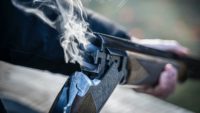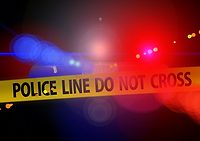Secret Service Report Details Themes Among Mass Attackers

There were 23 mass attacks on US soil last year that resulted in 147 deaths, nearly 700 injuries, says a new Secret Service report.
According to the Secret Service National Threat Assessment Center (NTAC):
- Nearly half were motivated by a personal grievance related to a workplace, domestic, or other issue.
- Over half had histories of criminal charges, mental health symptoms, and/or illicit substance use or abuse.
- All had at least one significant stressor within the last five years, and over half had indications of financial instability in that timeframe.
- Over three-quarters made concerning communications and/or elicited concern from others prior to carrying out their attacks. On average, those who did elicit concern caused more harm than those who did not.
THE PUBLIC SITES: The 28 incidents were carried out at 31 different sites, with nearly half (46%) at businesses (e.g., a bank, retailers, a law office, warehouses). Those that took place in open spaces represented nearly a third (32%) and included such locales as public sidewalks, a large outdoor event, attractions, and communal areas. Four attacks (14%) were carried out at educational institutions including two elementary schools, one high school, and one university. The remaining incidents took place on commuter trains, at an airport, and at churches.
THE WEAPONS: Though most of the attacks were carried out using a firearm (82%), vehicles (11%) and knives (7%) were also used. Given the preliminary information on the attackers, of the 23 who used firearms, at least 10 possessed their weapons illegally at the time of the incident. Two of those ten were minors, and the others were either felons, had a protective order against them, or had some other factor that should have prohibited them from owning a firearm.
THE TIMING: The attacks took place throughout the year and occurred on every day of the week. Over half (61%) took place between the hours of 7:00 a.m. and 3:00 p.m. For half (50%), the violence ended within 5 minutes from when the first shot was fired or first person was harmed.
END OF THE ATTACKS: In over half of the incidents, the attackers ended the violence by either departing the scenes on their own (36%) or committing suicide at the scene (25%). For the remaining attacks, the violence ceased as a result of actions taken by law enforcement (18%) or bystanders (n = 2, 7%), with a few ending when the firearm or vehicle became inoperable (14%).
THE RESOLUTION: Eight attackers (29%) committed suicide as part of the incident or soon after departing the scene. Others were taken into custody at or near the scene (32%), or apprehended at another location (25%). The remaining four were killed by law enforcement (14%).
GENDER AND AGE: All of the attackers were male. They ranged from a 15-year-old high school student to a 66-year-old retiree, with an average age of 37 years old. Though there may be a perception that mass attackers tend to be within a certain age range, for example, much older or much younger, we found almost equal distributions within major age groups.
SUBSTANCE USE: About half of the attackers (54%) had a history of illicit drug use and/or substance abuse. This abuse, which included alcohol and marijuana, was evidenced by such factors as the attacker receiving treatment for the abuse, suffering legal consequences, or having significant problems in their personal lives stemming from the abuse.
CRIMINAL CHARGES AND DOMESTIC VIOLENCE: Most of the attackers (71%) had histories of criminal charges beyond minor traffic violations. Those charges included both non-violent (57%) and violent (54%) offenses. Further, seven of the violent offenders had charges related to domestic violence. 6 In addition to the seven, two others were the subject of domestic disturbance calls during which no charges were filed. With that, we found that one third of the attackers (9) had histories related to domestic violence.
MENTAL HEALTH: Nearly two-thirds of the attackers (64%) experienced mental health symptoms prior to their attacks. The most common symptoms observed were related to psychosis (e.g., paranoia, hallucinations, or delusions) and suicidal thoughts. Further, some attackers (25%) had been hospitalized for treatment or prescribed psychiatric medications prior to their attacks
Read more: https://www.secretservice.gov/data/protection/ntac/USSS_NTAC-Mass_Attacks_in_Public_Spaces-2017.pdf
Looking for a reprint of this article?
From high-res PDFs to custom plaques, order your copy today!





